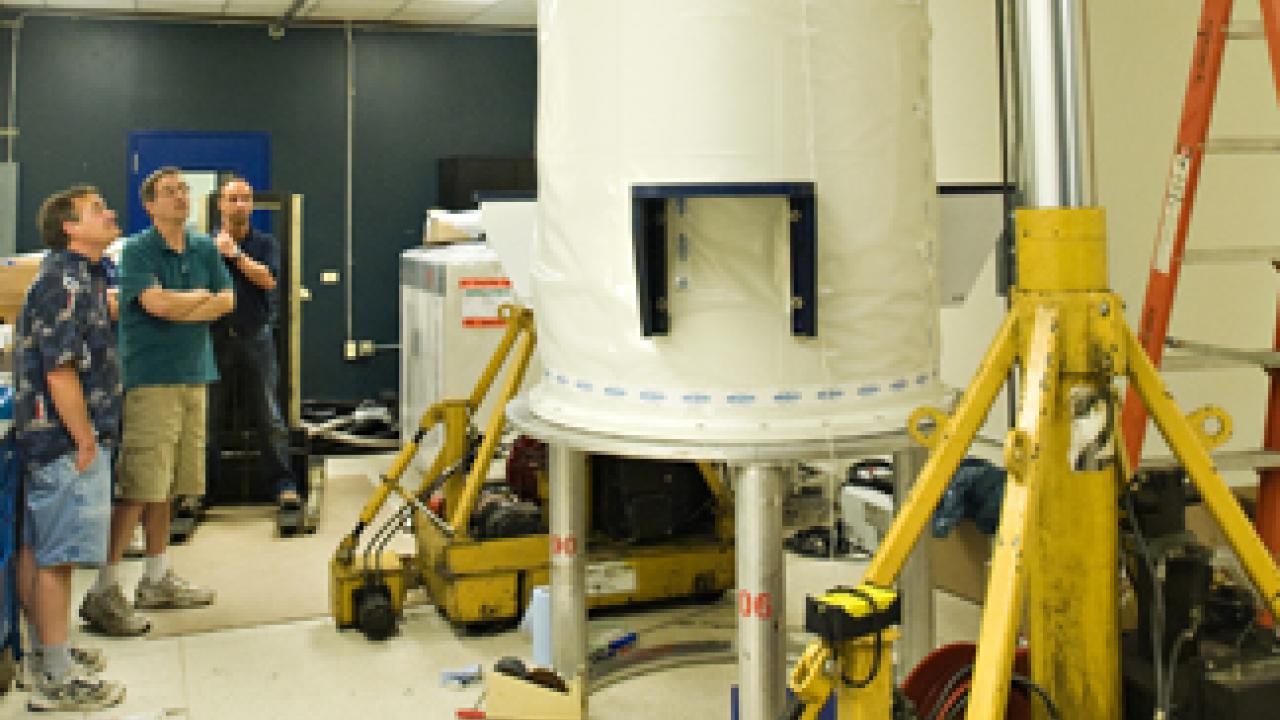Campus chemists will soon have a new research tool with the arrival of one of the most powerful nuclear magnetic resonance machines available commercially. The 800 megaHertz instrument, built by Bruker Biospin Inc., is now being installed at the NMR facility in Medical Sciences 1D in the Health Sciences District.
"Superexcited!" was the first response from Jacquelyn Gervay-Hague, professor of chemistry, when asked for comment, adding that it would bring "a whole new insight" into her work.
Nuclear magnetic resonance is used to work out the structure of organic molecules, such as proteins or potential new drugs. The MRI scanners used in hospitals use a form of NMR to image soft tissues inside the body.
"NMR is one of the few techniques that gives you atomic level information," said Jim Ames, associate professor of chemistry. "It tells you how atoms are connected together and how they are arranged in space."
The new machine will work at a higher resolution than UC Davis 10 existing NMR instruments, allowing investigations of bigger and more complex structures, said Jeff de Ropp, manager of the campus NMR Facility. It will make possible some experiments not possible with smaller machines, get faster results and be able to probe much smaller samples.
"If you are dealing with precious materials or natural products, you may have less than a milligram to work with," Gervay-Hague said. Her lab uses NMR to study compounds that could lead to treatments for cancer or HIV infection.
The machine arrived Aug. 26 in two tractor-trailers, along with ancillary equipment and installation gear. The floor of the room had been reinforced with concrete using non-magnetic fiberglass rebar, and the ceiling had been raised to accommodate the instrument, but one cost-saving advantage was that it did not require an entire new building.
Technicians from the manufacturer and UC Davis have been working to set up the instrument, and it should be ready for users in mid-October.
At the heart of the NMR instrument is a powerful magnet cooled to near-absolute zero with a jacket of liquid helium, in turn cooled by an outer jacket of liquid nitrogen.
The machine was purchased with a $1.6 million grant from the National Science Foundation, with campus funds making up the remainder of the $2.5 million cost.
"One thing that was critical to getting this grant was the strong NMR infrastructure we have here," Gervay-Hague said. "We really do get the most out of these instruments, because of the expertise here in the facility."
The new machine will be used for a wide range of studies,
such as investigating the structures of proteins and other large biological molecules; discovering natural products that could potentially be new drugs; and for metabolomics, de Ropp said. Metabolomics is a new field in which researchers try to get a global picture of all the molecules involved in a process such as milk production.
NMR is the only technique that can give you both the structure of the protein and how the atoms are moving within it, Ames said. His lab uses NMR to study proteins that bind and release calcium in the eye and the brain. Those proteins are part of a signaling pathway that allows the eye to adapt to changing light levels, and have been implicated in some types of retinal degeneration and eye diseases.
"It's something no other technique can do," Ames said.
The UC Davis core NMR Facility currently operates 10 instruments, five at Medical Sciences 1D, four at the Department of Chemistry and one in Kemper Hall. The machines are regularly used by about 70 faculty across all the colleges, the School of Medicine and the School of Veterinary Medicine.
Media Resources
Dave Jones, Dateline, 530-752-6556, dljones@ucdavis.edu
